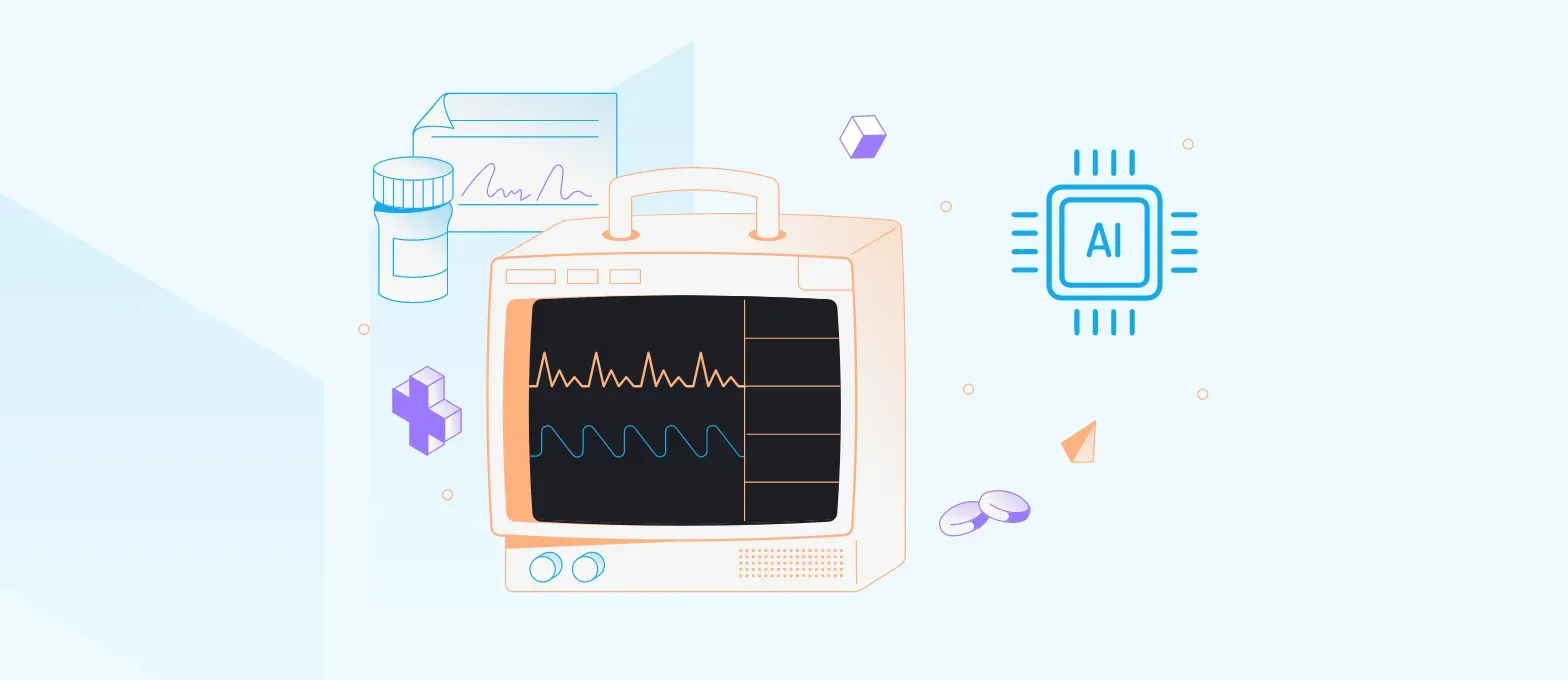How is AI Revolutionizing Wearable Tech?

The future of personalized medicine is here and the popularity of wearable tech is on the rise. More and more people are incorporating healthcare AI into their everyday routines through wearable tech. Pins, pendants, watches, rings, headsets, and even glasses include AI applications to make our lives easier and healthier.
Wearable devices featuring generative AI have exploded in the past decade. These include the newest versions of household names like FitBit and Apple Watch. As these devices start to incorporate NLP tools, wearers can immediately “chat” with their devices and receive health suggestions in return.
The rush to market makes wearable tech a healthcare revolution, constantly improving and providing limitless opportunities for innovation.
The Future of Personalized Medicine
It’s not just about fitness, either. While wearable tech is a convenient way to track your activity levels, these devices are now more useful than ever. Medical applications enhance our understanding of our bodies—and can connect us with a doctor if needed. This includes:
- Disability Management: Wearable tech can help manage daily tasks while living with disabilities. A prime example is audio description in Smart Glasses. When the feature is selected, a vision-impaired user can have their glasses provide audible descriptions of their surroundings.
- Health Monitoring: These devices provide a continuous flow of information regarding our bodily statistics and patterns. From sleep quality to blood pressure, breathing, heart rate, and physical activity, it’s easy to track trends.
- Personalized Recommendations: As AI devices monitor our functions, they can use data trends to offer curated tips for better health. They can also alert you to consider seeing a doctor about a concerning issue.
- Medication Adherence: Your wearable tech can remind you when to refill or pick up a prescription, take it, and track its effects. It can also monitor your body functions after you take your meds, making sure everything stays in reasonable parameters. This simple example of automation in healthcare is a great way to keep on top of your needs.
- Early Disease Detection: Wearable devices constantly monitor your body, so they can quickly detect subtle differences that could signal an issue. For example, your device can alert you to a sudden change in oxygen levels—and notify your PCPor associated specialist, if you desire. Automatically tracking changes and symptoms is valuable for early disease detection and prevention.
Wearable Tech in Clinical Settings
Wearable tech isn’t only for individuals; it’s becoming a leading tool for hospitals and clinics providing patient care. An forerunner of this movement is Jobsity client Zebra Technologies.
Zebra is a development company responsible for a variety of wearable technologies across industries. Their HealthTech solutions leverage artificial intelligence to empower patients, doctors, and non-clinical staff to effectively collaborate and provide excellent care.
One of the most important uses of their wearable tech is patient and staff tracking. Zebra bracelets use barcode technology to ensure patient safety and proper identification from admission to release. Patient wristbands are scanned at every point: admission, medication administration, transportation, testing, charting, vitals, etc.
Data is automatically entered and tracked by the hospital system, providing automated patient updates to hospital staff. AI integration allows personalized suggestions, scheduling, and the ability to view trends over time. Zebra’s technology also invites collaboration between clinicians and departments, making patient data immediately accessible and encouraging proper use.
Another way this technology contributes to hospital function is inventory tracking. Facilities can use Zebra barcodes to track supplies, medications, and even waste management, automating menial tasks. AI applications can use this data to track levels, suggest orders, and alert staff of unusual occurrences.
Making a Name in a Dynamic Industry
As AI-based wearable tech makes healthcare easier, safer, and more personalized, a question remains: How can software companies find their niche in the future of AI in healthcare?
One thing’s for sure: creating successful tech products requires the perfect balance of speed and quality. To accomplish this, you need the right people on your team at the right time. But top tech talent can be tough to find and harder to hire.
That’s where Jobsity comes in.
Jobsity helps you hire a hand-picked team without the hassle. We offer a personalized approach to expanding your staff while saving you up to 40% in hiring costs. Our developers have years of proven experience and the soft skills necessary to blend seamlessly into your company.
Jobsity staff also operate in your time zone (or close to it), so they can work alongside your in-house team. This makes communication simple and effective—as though you were working with local hires.
There’s never been a better time to develop your app, contribute to the AI revolution, and change the industry. Book a call to get started today!
Donna Kmetz is a business writer with a background in Healthcare, Education, and Linguistics. Her work has included SEO optimization for diverse industries, specialty course creation, and RFP/grant development. Donna is currently the Staff Writer at Jobsity, where she creates compelling content to educate readers and drive the company brand.
